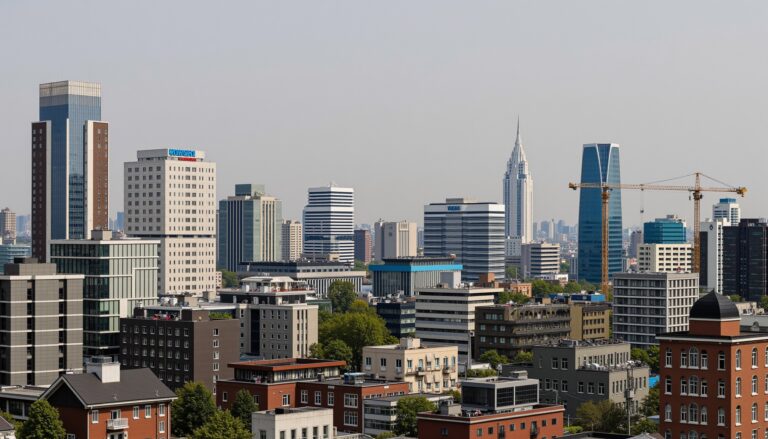Access to public services is a fundamental right that enables individuals to enjoy a higher quality of life, ensuring that everyone has the support they need to thrive.
Public services access encompasses a wide range of essential resources, including healthcare, education, housing, and social services, designed to meet the varied needs of citizens.
Understanding the importance of these services, the types available, and how to effectively navigate the system is crucial for maximizing their benefits.
In this guide, we will explore the various aspects of public services access, providing you with a comprehensive resource to help you unlock the support you require.


How to Access Public Services: Step-by-Step Guide
Accessing public services can sometimes feel overwhelming, but by following these simple steps, you can ensure a smooth process.
Firstly, identify the specific public service you need, whether it’s healthcare, education, or social services.
Next, visit the official website of the relevant agency, where you can find valuable information and resources.
Make sure to check the eligibility criteria and documentation required for your application.
If you’re unsure about certain details, consider reaching out via phone or email to ask questions.
After gathering the necessary documents, submit your application online or in person, depending on the service.
Keep track of your application status by using any provided reference numbers.
Finally, once you gain access, familiarize yourself with the service options and ongoing support available to ensure you’re making the most of the public services access you’ve obtained.
Key Resources and Support Networks
When considering an investment in Costa Rica real estate, understanding the landscape of public services access is crucial for both new residents and investors.
Costa Rica boasts a robust system of public services, which includes health care, education, and infrastructure support that enhances the overall living experience.
The country’s public health care system, known as Caja Costarricense de Seguro Social (CCSS), provides affordable medical services to all residents, making it an attractive option for those relocating.
Furthermore, Costa Rica’s commitment to education is reflected in its high literacy rates and the availability of bilingual schools, catering to both local and expatriate communities.
Access to reliable transportation networks, such as highways and public transit, facilitates daily commutes and accessibility to popular destinations, further enhancing the appeal of real estate investments.
Additionally, numerous expatriate forums and local support networks provide valuable guidance on navigating these public services, ensuring newcomers can fully leverage their new environment.
As a result, having a comprehensive understanding of public services access not only enriches the living experience in Costa Rica but also serves as a significant factor in making informed real estate decisions.

Overcoming Barriers to Accessing Public Services
Accessing public services can often feel like navigating a maze, with various barriers standing in the way of individuals seeking essential resources.
Overcoming these barriers to public services access is crucial for improving community well-being and ensuring that everyone benefits from available support.
Common obstacles include bureaucratic red tape, lack of awareness about available services, and socioeconomic factors that can hinder engagement.
To tackle these issues, initiatives such as community outreach programs, streamlined application processes, and multilingual support can be instrumental in bridging the gap.
By actively working to dismantle these barriers, we can create a more equitable environment where public services access is not just a privilege, but a right for all individuals.
Future Trends in Public Services Access
In the coming years, future trends in public services access will be significantly influenced by advancements in technology and changes in societal expectations.
As digital transformation continues to reshape the landscape, we can anticipate a stronger emphasis on online platforms that enhance user experience and accessibility.
Initiatives aimed at improving digital literacy will ensure that all citizens, regardless of age or background, can effectively navigate these services.
Furthermore, the integration of AI and machine learning in public service delivery will enable personalized support, making access to public services more efficient and user-friendly.
Local governments will likely implement mobile applications that provide real-time information and facilitate interactions with public entities, thus fostering a more engaged and informed citizenry.
Additionally, a growing focus on inclusivity will push for public services access to be available in multiple languages and formats, addressing the diverse needs of communities.
Overall, these trends underscore the importance of making public services not only accessible but also responsive to the evolving demands of society.
Frequently Asked Questions
What are public services and why are they important?
Public services are government-provided services designed to enhance the well-being of citizens.
They are essential because they offer support in areas like healthcare, education, safety, and infrastructure, ensuring that all individuals, regardless of their circumstances, have access to basic needs and rights.
What types of public services are available?
Public services encompass a wide range of offerings, including healthcare, educational services, transportation, public safety (police and fire services), housing assistance, social services, and environmental protection.
How can I access public services?
To access public services, first identify the specific service you need.
Then, follow a step-by-step process which typically includes researching eligibility requirements, gathering necessary documentation, and contacting the appropriate agency through their website, phone, or in-person visit.
What resources are available to assist with accessing public services?
There are several key resources available, such as local government websites, community centers, non-profit organizations, and helplines that provide information and support.
These resources can guide you through the process of accessing the services you need.
What are some common barriers people face in accessing public services?
Common barriers include lack of awareness or understanding of available services, complicated application processes, language and cultural differences, and logistical issues like transportation challenges or operating hours that don’t align with work schedules.





